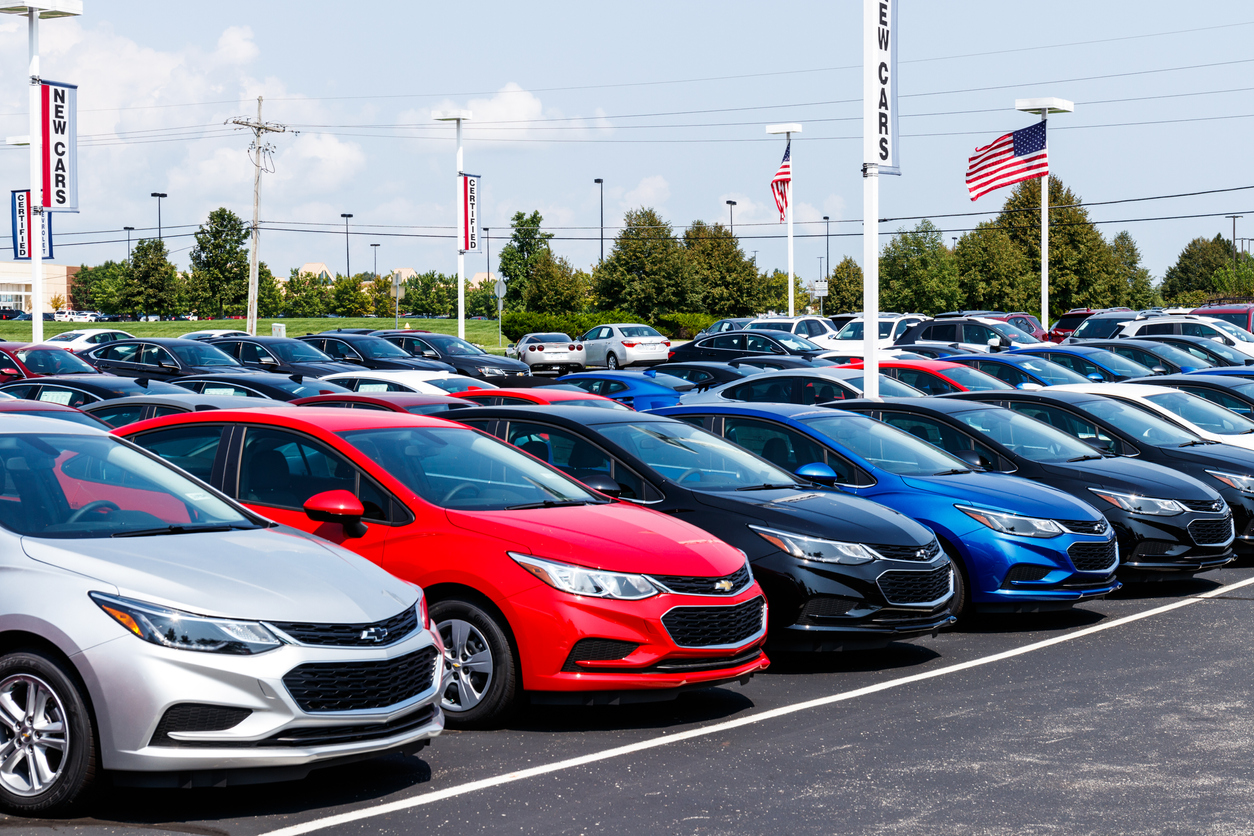Used Chevy Trucks For Sale Under $13,000: Your Comprehensive Buying Guide pickup.truckstrend.com
In an era where new vehicle prices continue to soar, the prospect of owning a reliable, capable pickup truck can seem out of reach for many. However, the used market offers a compelling solution, particularly when it comes to the enduring legacy of Chevrolet trucks. For buyers operating with a budget of under $13,000, a treasure trove of robust, work-ready, and surprisingly comfortable Chevy trucks awaits. This guide will navigate the landscape of used Chevy trucks available in this price bracket, offering insights into what to look for, where to find them, and how to make a smart, informed purchase that stands the test of time.
Chevrolet trucks have long been synonymous with durability, power, and utility. Their reputation for building vehicles that can handle tough jobs and last for hundreds of thousands of miles makes them an ideal candidate for budget-conscious buyers. While a $13,000 budget might not land you the latest model, it opens the door to well-maintained, pre-owned workhorses that still have plenty of life left to offer, whether for daily commuting, hauling, towing, or weekend adventures. This article aims to be your definitive resource, helping you unlock the value and potential of a used Chevy truck without breaking the bank.
Used Chevy Trucks For Sale Under $13,000: Your Comprehensive Buying Guide
Why Choose a Used Chevy Truck? The Enduring Appeal
Before diving into specific models and buying tips, it’s worth understanding why a used Chevrolet truck is such a strong contender in the sub-$13,000 market.
- Legendary Durability: Chevy trucks, especially models from the late 1990s through the early 2010s, are renowned for their robust construction. Frames are typically strong, and powertrains, particularly the Vortec V8 engines, are known for their longevity when properly maintained.
- Powerful and Capable: Even older models offer impressive towing and hauling capabilities. The ubiquitous 5.3L Vortec V8, for example, provides ample power for most recreational and work-related tasks, making these trucks true workhorses.
- Abundant Parts and Aftermarket Support: Chevrolet is one of the largest vehicle manufacturers, meaning parts for their trucks are readily available and often affordable, whether new, used, or aftermarket. This simplifies maintenance and repairs significantly.
- Vast Knowledge Base: Due to their popularity, there’s a huge community of owners, mechanics, and online resources dedicated to Chevy trucks. This makes troubleshooting problems, finding repair guides, and getting advice much easier.
- Resale Value: While you’re buying used, well-maintained Chevy trucks tend to hold their value relatively well, offering a solid investment should you decide to upgrade in the future.

Top Contenders: What Models to Expect Under $13,000
With a $13,000 budget, you’ll primarily be looking at models from the late 1990s through the mid-2010s. The exact year and condition will vary based on location, mileage, and trim level, but here are the most common and recommended options:
1. Chevrolet Silverado 1500 (GMT800 & Early GMT900 Generations)
-
GMT800 (1999-2006, and "Classic" 2007): This generation is arguably the sweet spot for value, reliability, and capability within this budget.
- Engines: Most commonly found with the 4.8L, 5.3L, or 6.0L Vortec V8 engines. The 5.3L is a fantastic balance of power and efficiency, highly recommended. You might also find a 4.3L V6 in base models.
- Transmissions: Typically paired with the durable 4L60E or 4L80E automatic transmissions.
- Body Styles: Available in Regular Cab, Extended Cab (with suicide doors), and Crew Cab (with four full doors). Crew cabs tend to command higher prices.
- Why it’s a great choice: These trucks are workhorses. They’re known for their stout frames, strong powertrains, and relatively simple electronics, making them easier to maintain. Parts are plentiful and cheap.

-
Early GMT900 (2007.5-2013): You might find early models of this generation creeping into the $13,000 range, especially with higher mileage or some cosmetic flaws.
- Engines: Similar Vortec engines (4.8L, 5.3L, 6.0L), often with Active Fuel Management (AFM) on the 5.3L, which can be a point of concern for some buyers (see "Common Challenges" below).
- Improvements: More refined interior, better ride quality, and updated styling compared to the GMT800.
- Considerations: While more modern, they can have more complex electronics and the AFM system on the 5.3L requires careful consideration.

2. Chevrolet Colorado / GMC Canyon (First Generation)
- 2004-2012: If you need a smaller, more maneuverable truck, the first-generation Colorado (and its GMC Canyon twin) is a solid option.
- Engines: Available with 2.8L/2.9L inline-4 or 3.5L/3.7L inline-5 engines. These are generally reliable but less powerful than the Silverado’s V8s.
- Capability: Great for light hauling, commuting, and those who don’t need full-size truck capabilities. More fuel-efficient than a full-size.
- Considerations: Check for common issues like fan resistor failures, and ensure the engine has been properly maintained.
3. Chevrolet S-10 (Second Generation)
- 1994-2004: While older, a well-maintained S-10 can still be found well within budget and serve as an excellent light-duty utility vehicle.
- Engines: Typically with a 2.2L inline-4 or 4.3L V6. The 4.3L V6 is a robust and popular engine.
- Simplicity: These trucks are relatively simple, making DIY repairs more accessible.
- Why it’s a choice: Extremely affordable, good for city driving, light hauling, or as a dedicated work truck.
Note: While not strictly "trucks," truck-based SUVs like the Chevrolet Tahoe/Suburban (especially GMT800 generation) often share platforms and powertrains with the Silverado and can be found under $13,000, offering similar utility with enclosed cargo space and more passenger capacity.
Critical Inspection Points: What to Look For Before You Buy
When evaluating a used Chevy truck, especially one in this price range, a thorough inspection is paramount. Don’t rush the process.
- Rust: This is a major concern, particularly in areas that use road salt.
- Frame: Check the entire frame for excessive surface rust, flaking, or rot. Pay close attention to crossmembers and mounting points.
- Body: Inspect rocker panels, cab corners, wheel wells, bed supports, and the bottom of the doors for rust.
- Brake Lines/Fuel Lines: These are vulnerable to rust and can be expensive to replace if compromised.
- Engine:
- Leaks: Look for oil, coolant, or transmission fluid leaks under the hood and on the ground.
- Noises: Listen for knocking, ticking (especially on 5.3L Vortecs, could be lifters), or whining.
- Check Engine Light (CEL): If it’s on, get it scanned. Don’t buy a truck with a persistent CEL unless you know the exact, minor cause and factor in repair costs.
- Fluid Condition: Check oil (shouldn’t be milky or sludgy), coolant (should be clean, not rusty or oily), and transmission fluid (should be red/pink, not brown or burnt-smelling).
- Transmission:
- Test Drive: Shifts should be smooth and predictable, without hesitation, slipping, or harsh clunks. Test all gears, including reverse.
- Fluid: As mentioned, check condition.
- 4WD System (if applicable):
- Engage 4-High and 4-Low. Drive slowly in a straight line (on a loose surface if possible) to ensure it engages and disengages smoothly. Listen for grinding or binding.
- Suspension and Steering:
- Test Drive: Listen for clunks, squeaks, or groans over bumps. Feel for excessive play in the steering wheel or wandering.
- Inspection: Look for worn ball joints, tie rod ends, control arm bushings, and leaking shocks.
- Brakes:
- Test Drive: Pedal should be firm, no pulling to one side, no grinding or squealing.
- Inspection: Check rotor condition (no deep grooves) and pad thickness.
- Electrical: Test all lights (headlights, tail lights, turn signals, brake lights), power windows, power locks, radio, HVAC system, and gauges. Common issues on older GM trucks include instrument cluster failures and HVAC blend door actuators.
- Tires: Check tread depth and ensure even wear. Uneven wear can indicate alignment or suspension problems.
- Interior: Look for excessive wear, tears in upholstery, and missing trim pieces. Check for odors (smoke, mold).
- Documentation: Ask for maintenance records. A truck with a documented service history is generally a safer bet.
- Pre-Purchase Inspection (PPI): This is the single most important piece of advice. For a few hundred dollars, a trusted independent mechanic can put the truck on a lift and perform a thorough inspection, identifying potential costly issues you might miss. It’s money well spent.
The Buying Process: Where to Find and How to Negotiate
Finding the right truck requires patience and a systematic approach.
- Online Marketplaces:
- Craigslist, Facebook Marketplace: Often where you’ll find private sellers. Be wary of scams, insist on meeting in a public place, and don’t send money upfront. These platforms offer the best opportunities for negotiation.
- AutoTrader, CarGurus, Cars.com: Good for both private sellers and dealerships. Filters allow you to narrow down by price, mileage, and features.
- Local Dealerships (Used Car Lots):
- Pros: May offer financing, limited warranties, and a more structured buying process. Vehicles are often detailed and inspected (though the quality of inspection varies).
- Cons: Generally higher prices due to overhead. Less room for negotiation.
- Private Sellers:
- Pros: Often the best deals, direct access to the vehicle’s history (if the owner is honest), more flexible negotiation.
- Cons: "As-is" sales, no warranty, and you need to be more diligent with your inspection.
- Auctions:
- Pros: Potentially very low prices.
- Cons: High risk. You typically can’t test drive, and inspections are limited. Best for experienced buyers or mechanics.
Negotiation Tips:
- Research Market Value: Use online tools to see what similar trucks are selling for in your area.
- Be Prepared to Walk Away: If the seller isn’t budging on price or if the truck has too many issues, be ready to move on.
- Highlight Flaws: Use any issues you find during your inspection (or that the mechanic finds) as leverage for negotiation.
- Have Cash Ready: For private sellers, cash can be a powerful negotiating tool.
Beyond the Purchase Price: Total Cost of Ownership
Remember, the purchase price is only one part of owning a truck. Factor in these additional costs:
- Insurance: Older trucks are generally cheaper to insure, but rates vary by driver, location, and coverage.
- Registration and Taxes: State-specific fees.
- Maintenance: Budget for routine oil changes, tire rotations, brake jobs, and fluid flushes.
- Potential Repairs: Even a well-inspected truck might need unexpected repairs. Having an emergency fund is crucial.
- Fuel: Older V8 trucks can be thirsty. Factor in fuel costs for your estimated mileage.
Common Challenges & Solutions for Older Chevy Trucks
While reliable, older trucks do have common issues. Knowing them can help you identify problems and plan for future maintenance.
- Rust: Prevention is key (washing regularly, undercoating). For existing rust, small spots can be repaired, but extensive frame rust is a deal-breaker.
- Fuel Pump Failure: Common on GMT800 Silverados. Symptoms include hard starts or no start. It’s a known issue but a relatively straightforward replacement.
- Active Fuel Management (AFM) Issues (on 5.3L GMT900): Can lead to excessive oil consumption, fouled spark plugs, and lifter failure. Some owners disable AFM with aftermarket tuners or replace components. Be aware of this if considering a GMT900 5.3L.
- Dashboard Cracks: Very common on GMT800 and GMT900 trucks due to sun exposure. Mostly cosmetic, but can be unsightly. Dash covers are an affordable solution.
- Instrument Cluster Issues (GMT800): Gauges can become erratic or stop working. Can often be repaired or replaced by specialized services.
- ABS Module Failure: Can cause the ABS light to come on. Often, the module can be rebuilt rather than replaced entirely.
- Door Handle Breakage: Plastic interior door handles on GMT800s are prone to breaking. Easy and cheap to replace.
Maximizing Your Investment and Longevity
Once you’ve bought your used Chevy truck, a few practices will ensure it serves you well for years to come:
- Adhere to a Strict Maintenance Schedule: Don’t skip oil changes, fluid checks, or filter replacements. Consult the owner’s manual or an online resource for recommended intervals.
- Address Issues Promptly: Don’t let minor problems fester. A small leak or strange noise can quickly escalate into a major repair if ignored.
- DIY Where Possible: Many common repairs on older Chevy trucks (e.g., spark plugs, brakes, minor electrical) can be done by a handy individual with basic tools, saving significant labor costs.
- Keep Records: Maintain a folder of all maintenance, repairs, and inspections. This helps track your vehicle’s history and can add value if you sell it.
- Consider Upgrades: Aftermarket parts can improve performance, aesthetics, or utility. A good set of tires, updated lighting, or a bed liner can enhance your truck’s functionality.
Used Chevy Trucks Under $13,000: Price Expectation Table
This table provides a general guide for what you might expect to find under $13,000. Prices vary significantly based on location, mileage, condition, and specific features.
| Model | Typical Years Found Under $13,000 | Common Engine Options | Expected Condition / Mileage Range |
|---|---|---|---|
| Chevrolet Silverado 1500 | 1999-2006 (GMT800) | 4.8L, 5.3L, 6.0L Vortec V8; 4.3L V6 | Good to Fair Condition; 120,000 – 200,000+ miles (well-maintained) |
| Early 2007-2010 (GMT900) | 4.8L, 5.3L, 6.0L Vortec V8 (with/without AFM) | Fair Condition; 150,000 – 220,000+ miles (often higher mileage) | |
| Chevrolet Colorado / GMC Canyon | 2004-2012 (1st Gen) | 2.8L/2.9L I4; 3.5L/3.7L I5 | Good to Fair Condition; 100,000 – 180,000+ miles |
| Chevrolet S-10 | 1998-2004 (2nd Gen) | 2.2L I4; 4.3L V6 | Fair to Good Condition; 100,000 – 180,000+ miles (often lower mileage) |
| Chevrolet Tahoe / Suburban | 1999-2006 (GMT800) | 4.8L, 5.3L, 6.0L Vortec V8 | Good to Fair Condition; 130,000 – 200,000+ miles (similar to Silverado) |
Note: Trucks at the lower end of the budget ($5,000-$8,000) will typically have higher mileage, more cosmetic flaws, and potentially require more immediate maintenance. Trucks closer to the $13,000 mark will generally be newer, have lower mileage, or be in superior condition.
Frequently Asked Questions (FAQ)
Q1: What’s the best year Silverado to buy under $13,000?
A1: The 1999-2006 (GMT800) Silverado 1500, particularly with the 5.3L Vortec V8, is often considered the best value. They are incredibly durable, parts are abundant, and they are simpler to work on than newer models.
Q2: Is a 4WD truck necessary, or can I save money with 2WD?
A2: It depends on your needs. If you live in a snowy climate, frequently drive off-road, or need maximum traction for towing boats/trailers on ramps, 4WD is beneficial. If you primarily drive on paved roads and don’t encounter harsh conditions, a 2WD truck will be more fuel-efficient, less complex, and generally cheaper to buy and maintain.
Q3: Are parts for older Chevy trucks hard to find or expensive?
A3: Absolutely not. Chevy trucks are among the most popular vehicles ever sold in the US. This means parts are readily available from dealerships, aftermarket suppliers, and junkyards, and are often very reasonably priced.
Q4: What mileage is too high for a used Chevy truck?
A4: For Chevy trucks, condition and maintenance history are more important than just mileage. Many 5.3L Vortec V8s are known to run well past 200,000 or even 300,000 miles with proper care. A truck with 180,000 well-maintained miles is often a better buy than one with 120,000 poorly maintained miles. Focus on the pre-purchase inspection.
Q5: Can I use these older trucks for towing?
A5: Yes! Most Silverado 1500 models with the 5.3L or 6.0L V8 can comfortably tow 7,000-9,000 lbs, depending on configuration (gearing, cab/bed size). Always check the specific truck’s Gross Combined Weight Rating (GCWR) and Gross Vehicle Weight Rating (GVWR) and ensure your trailer’s weight is within limits. Even Colorados and S-10s can handle lighter towing tasks.
Conclusion
Purchasing a used Chevy truck for under $13,000 is a smart and practical decision for many, offering an unbeatable combination of utility, power, and affordability. While it requires diligent research, a thorough inspection, and an understanding of the potential challenges of older vehicles, the reward is a reliable workhorse that can serve you faithfully for years to come. By focusing on models like the GMT800 Silverado, knowing what to inspect, and budgeting for potential future maintenance, you can confidently drive home in a capable Chevy truck that meets your needs without emptying your wallet. Embrace the value, embrace the utility, and enjoy the open road with your new-to-you Chevy.